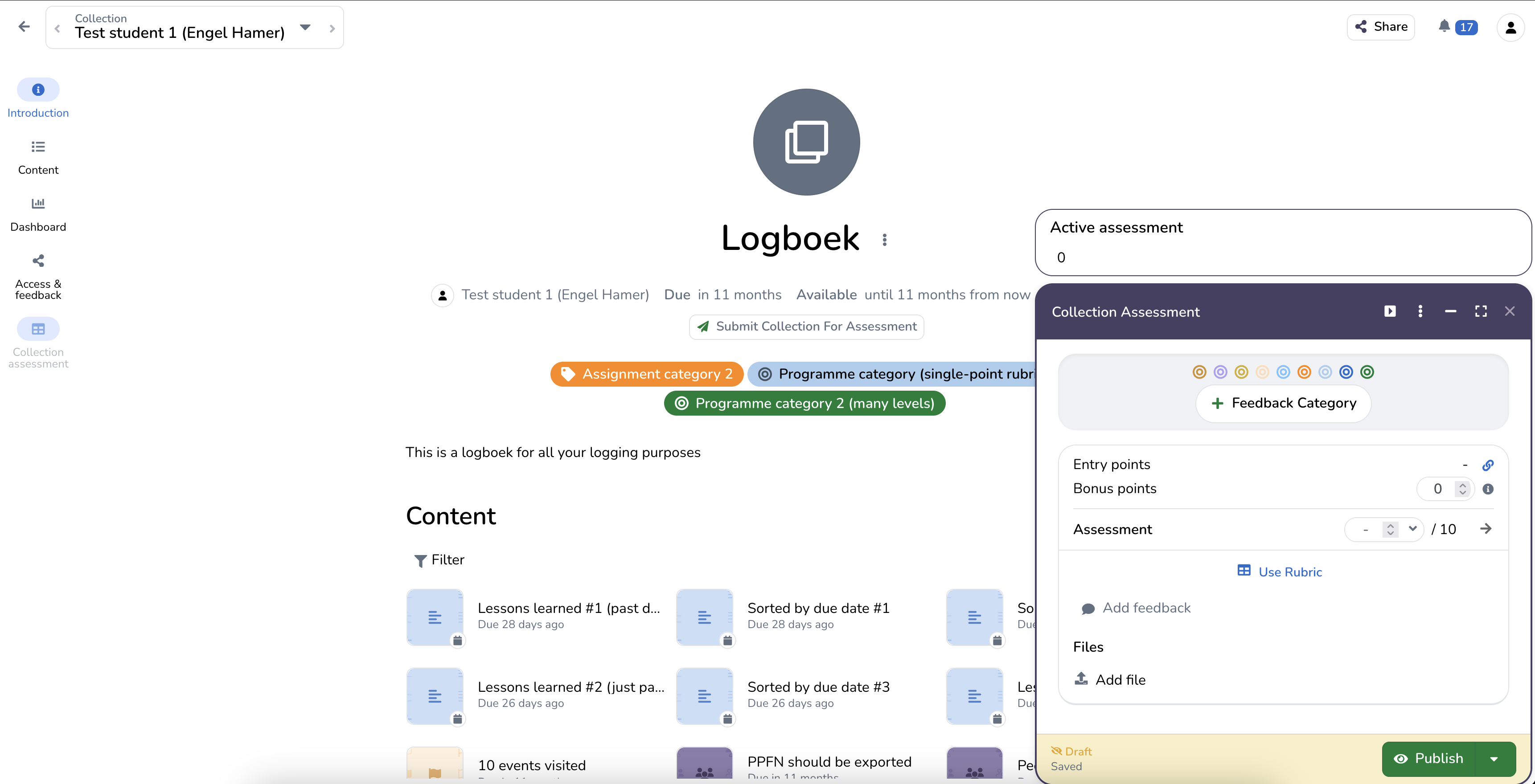A collection assessment looks at a collection as a whole, and generally encompasses multiple pieces of evidence and feedback.
Would you like to assess a specific collection activity instead? Follow this guide.
¶ How to assess a collection
Within a student's collection you can click the Collection assessment tab to start a collection assessment.

A collection assessment starts as a draft and by default shows over or next to the content and dashboard of the collection. This allows you to freely browse the collection and fill in your assessment as you progress.